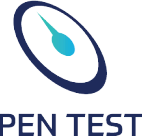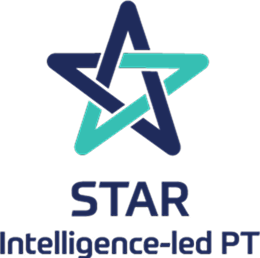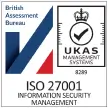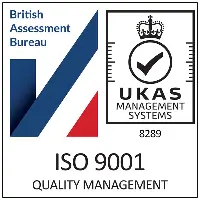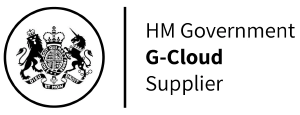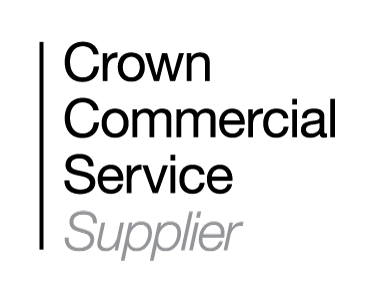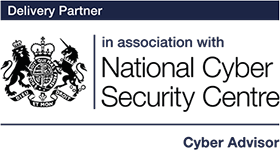What is SOC 2 Compliance? SOC 2 Certification Explained
Read this handy guide to SOC 2 compliance to learn what SOC 2 is, when you need it, and how to become compliant.

Introduction
SOC 2 is an information security standard, created by the American Institute of Chartered Public Accountants (AICPA) to provide assurance of an organisation’s management of data.
Despite being a primarily US-centric standard, demand for SOC 2 compliance is increasing all the time in the rest of the world, including here in the UK. At its core, SOC 2 is a compliance standard designed to ensure strong levels of information security inside a business. In this way, SOC 2 shares a lot of similarities in its aims and objectives with ISO 27001, so completing one gives a head start on the other.
Share this Article
Contents
- What is SOC 2 compliance?
- SOC 2 & the 5 principles of trust
- Type I and Type II SOC 2 compliance
- Get started with SOC 2 compliance from seasoned experts
- Why SOC 2 is important
- SOC 2 certification or SOC 2 reports
- What is the difference between SOC 1 and SOC 2?
- Get a helping hand with our SOC 2 checklist
- 4 tips for SOC 2 compliance
- Trusted SOC 2 compliance support
- Related resources
Related Service
SOC 2What is SOC 2 compliance?
SOC 2 & the 5 principles of trust
As I mentioned previously, there are five principle areas that comprise SOC 2 and together they’re called the Trust Services Criteria (TSCs). Of the five SOC 2 TSCs, only one is mandatory for compliance. Whether you need to comply with the other four depends on the underlying factors driving your SOC 2 compliance.
Security TSC
Security is the only mandatory principle in the TSCs, and as such it’s often referred to as the ‘common criteria’ (CC). There are 9 points of focus within the security TSC:
- CC1 Control Environment
- CC2 Communication and Information
- CC3 Risk Assessment
- CC4 Monitoring Activities
- CC5 Control Activities
- CC6 Logical and Physical Access Controls
- CC7 System Operations
- CC8 Change Management
- CC9 Risk Mitigation
Availability TSC
Availability means that systems and data must remain accessible to users. Organisations should explore performance monitoring to prevent downtime affecting business-as-usual, as well as have a robust disaster recovery plan in place to keep your business online.
Processing Integrity TSC
The goal of this TSC to make sure your organisation’s system and information processing remains intact. Factors to consider here include validity, accuracy and timeliness of processes to support your operations.
Confidentiality TSC
Confidentiality means that access to data should be restricted, controlled and recorded. If an incident were to take place, you would have a full audit report to prove you have maintained data confidentiality in line with the SOC 2 compliance requirements.
Privacy TSC
Privacy should live and breathe throughout your business, for example, guiding how you collect, store, process, and dispose of data. This TSC is nearly as big as the Security TSC, so it can add significant work to SOC 2 compliance.
Type I and Type II SOC 2 compliance
The types of SOC 2 compliance vary more than their name might suggest, with Type II being much more in-depth and, as a result, more valuable. That’s why it’s the most popular of the two types of SOC 2 compliance.
Type I
SOC 2 Type I is a point-in-time assessment of your organisation against the relevant TSCs. As a one-off exercise, it’s cheaper and more accessible than the more in-depth Type II, but that also means it doesn’t give as thorough assurance
Type II
SOC 2 Type II is a measurement of your organisation’s adherence to the TSCs over a period of time – usually a few months. As an assessment over time, it’s naturally a more involved process. Whilst this makes SOC 2 Type II compliance more expensive, it also makes it more desirable: it’s a robust assurance that you’re meeting the required standards.
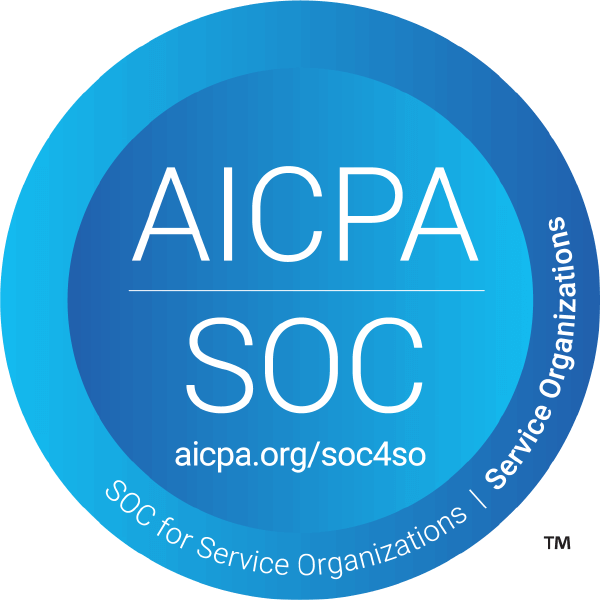
Get started with SOC 2 compliance from seasoned experts
Easy SOC 2 compliance from seasoned SOC 2 consultants. Get a competitive, cost-effective service from Bulletproof.
Find out how easy SOC 2 can beWhy SOC 2 is important
Some people are surprised when I tell them that SOC 2 compliance is not a formal legal requirement, meaning the driver to reach compliance is commercial, not legal. Not every service provider will have completed SOC 2 meaning that, in competitive situations, SOC 2 compliance provides you with a distinct advantage. SOC 2 is also often mandated in contracts, making SOC 2 compliance a direct business enabler.
SOC 2 certification or SOC 2 reports
Unlike contemporary compliance standards, such as ISO 27001, successfully meeting SOC 2 compliance does not come with a certificate! There’s no such thing as SOC 2 certification. Instead of a certificate, compliance is attested by a report that can only be provided by an AICPA-registered auditor. These reports include a detailed description of your systems, the results of the tests, and a management assertion on how well you meet the standard.
What is the difference between SOC 1 and SOC 2?
Contrary to what the name suggests, SOC 2 is not an update of SOC 1. They are two different compliance standards, with different goals, and one or both could be right for your organisation.
SOC 2 is the more common, and robust, of the two types. If you only handle non-financial data, choose SOC 2. But if you do handle financial data, or you need Sarbanes-Oxley (SOX) compliance to become a publicly traded company, a SOC 1 audit is also needed.
SOC 1
SOC 2 Type I is a point-in-time assessment of your organisation against the relevant TSCs. As a one-off exercise, it’s cheaper and more accessible than the more in-depth Type II, but that also means it doesn’t give as thorough assurance
SOC 2
SOC 1 focuses specifically on internal controls over financial reporting to help users understand the impact controls have on the organisation’s financial statements.
Get a helping hand with our SOC 2 checklist
Looking for a head start? One of the questions I get asked the most by people wondering ‘what is SOC 2 compliance’, is the broad-steps process. So, I’ve got a quick 8-point checklist covering what businesses need to do to work towards SOC 2 compliance.
-
1
Understand the framework
Have a clear understanding of the SOC 2 framework’s aims and requirements. Fully understanding the details of SOC 2 is absolutely essential to successfully achieving SOC 2 compliance.
-
2
Assess your security posture
Fully review all aspects of your security posture. This includes identifying the data that you collect and process, the risks to that data, and mitigating controls.
-
3
Implement controls
Implement the required technical, procedural and administrative controls as required. I’ve found that this is where accurate scoping and understanding the framework really help.
-
4
Train employees
Make sure SOC 2 is included in your employee security awareness training. Educate employees about the importance of security and the steps that they must take to protect data.
-
5
Review the incident response plan
Make sure that your incident response plan is up-to-date and that you have the resources in place to respond to various types of security incidents.
-
6
Monitor your security posture
Review your security posture on a regular, ongoing basis. This includes reviewing your controls, conducting security assessments, and responding to security incidents.
-
7
Document controls
For SOC 2 you must write things down. I hope that’s not a surprise. Document all the controls you have implemented, as well as the evidence that they are operating effectively.
-
8
Get an AICPA audit
Finally, a SOC 2 audit from an external AICPA auditor will assess your controls and issue a Type I or Type II report on your SOC 2 compliance status. Congratulations!
4 tips for SOC 2 compliance
As with a lot of things in the information security field, the process is always far easier when you do the right groundwork. With that in mind, here are 4 top tips for SOC 2 compliance from my experience.
-
Get buy-in from senior management
SOC 2 compliance can be a significant undertaking, so it’s a big help to get buy-in from senior management. I see that, when the top levels of an organisation are on-board with a project, it’s much easier to get the time and resources needed to see the project through.
-
Form a compliance team
Once you have senior management buy-in, it’s a great idea to put together a compliance team to oversee the whole process. This team should include representatives from all departments involved in the SOC 2 compliance process, such as IT, security, and risk management.
-
Use a compliance management tool
Using the right compliance management tool can help you to automate many of the tasks involved in SOC 2 compliance, such as risk assessments, control testing, and documentation. Bulletproof uses an automated compliance platform to help make SOC 2 as easy as possible for both me and the customer!
-
Get help from an export
If SOC 2 compliance feels like an uphill struggle, don’t worry. There are always people like me out there who’ve done this before and know how to take you through this process. A trusted SOC 2 consultant can help your business through it all: scoping, implementing controls, and audit readiness. They can also help you get things like SOC 2 penetration tests, and see where efficiencies can be made with other compliance frameworks.
Trusted SOC 2 compliance support
Bulletproof’s seasoned SOC 2 consultants and automated compliance platform make compliance easy & affordable.
Get started with SOC 2Related resources
Trusted cyber security & compliance services from a certified provider
Get a quote today
If you are interested in our services, get a free, no obligation quote today by filling out the form below.
